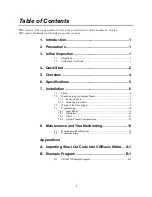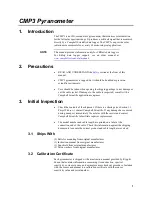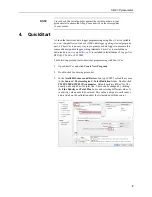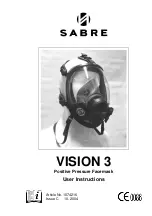
CMP3 Pyranometer
13
8.1 Maintenance/Recalibrations
Inspect and clean the outer dome every week or so. Clean any accumulated
dust or debris off the dome and pyranometer body using a soft cloth dampened
with water or alcohol. Check that there is no condensation within the dome.
Check the data returned from the sensor as it will show the first indication of a
fault. When doing this you should be aware of several expected phenomena
that can cause strange measurements. In particular on clear, windless nights the
outer dome temperature of horizontally placed pyranometers can fall as low as
the dew point temperature of the air, due to infrared radiation exchange with
the cold sky. (The effective sky temperature can be 30 °C lower than the
ground temperature, which results in an infrared emission of –150 W/m
2
). If
this happens, dew, glazed frost or hoar frost can be precipitated on the top of
the outer dome and can stay there for several hours in the morning. An ice cap
on the dome is a strong diffuser and can increase the pyranometer signal by up
to 50% in the first hours after sunrise.
The calibration of the CMP3 may drift with time and exposure to radiation.
Campbell Scientific recommends recalibrating every two years. The sensor
should be returned to Campbell Scientific, the manufacturer, or a calibration
lab with facilities to calibrate radiation sensors.
8.2 Troubleshooting
Symptom: –9999 or radiation values around 0
1. Check that the sensor is wired to the terminal that is specified by the
measurement instruction.
2. Verify that the range is correct for the data logger type.
3. Measure the impedance across the red and blue sensor wires. This should
be around 100 ohms plus the cable resistance (typically 0.1 ohm/m). If the
resistance is very low there may be a short circuit (check the wiring).
Resistances somewhat lower than expected could be due to water ingress
into the sensor or enclosure connectors. If the resistance is infinite, there is
a broken connection (check the wiring).
4. Disconnect the sensor cable and check the voltage output from the sensor.
With the sensor located 20 cm (8 inches) below a 60 W incandescent light
bulb, the voltage should be approximately 2.5 mV. No voltage indicates a
problem with the sensor.
Symptom: sensor signal is unrealistically high or low
1. Check that the right calibration factor has been properly entered into the
data logger program. Please note that each sensor has its own individual
calibration factor.
2. Check the condition of the sensor cable.
Symptom: sensor signal shows unexpected variations








































